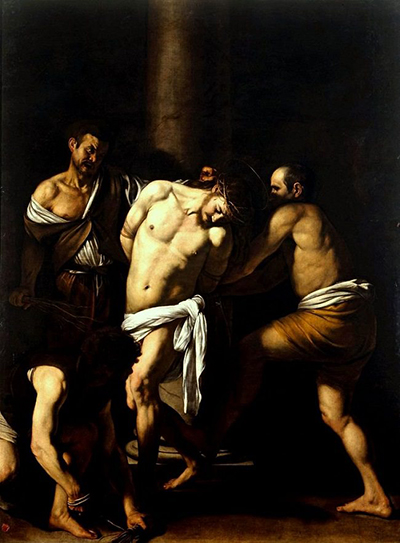The Flagellation of Christ is an oil on canvas painting completed in 1607, although the work may have been reworked in 1610.
It was commissioned by the di Franco family for a chapel in the San Domenico Maggiore church in Naples. The painting, however, no longer resides there and instead is housed at the Museo di Capodimonte.
As with many of Caravaggio's works, it depicts a violent episode of Christian religious iconography. The flagellation of Jesus at the hands of the Romans is mentioned in the Gospels of John, Mark and Matthew, as the preclude to his crucifixion.
It has been a longstanding subject of art from the 9th century. Caravaggio was influenced in this painting by Sebastiano del Piombo's fresco of flagellation held in the church of San Pietro in Montorio in Rome, reworking the general composition to reduce the framed space.
Caravaggio borrowed Piombo's posing of Christ's body on the pole, particularly in his depiction of a drooping head. The flagellation is similarly reproduced as an immensely violent and sadistic ritual, as the figures are positioned rhythmically around Christ.
Through Caravaggio's signature use of darkness and stark light flesh, he is able to push this scene of torture into that of cruel sadism, underscoring the manic violence of the act. This painting was made along with several other altarpiece works within months of arriving in Naples, consolidating Caravaggio's position within the city as a much lauded master artist.




